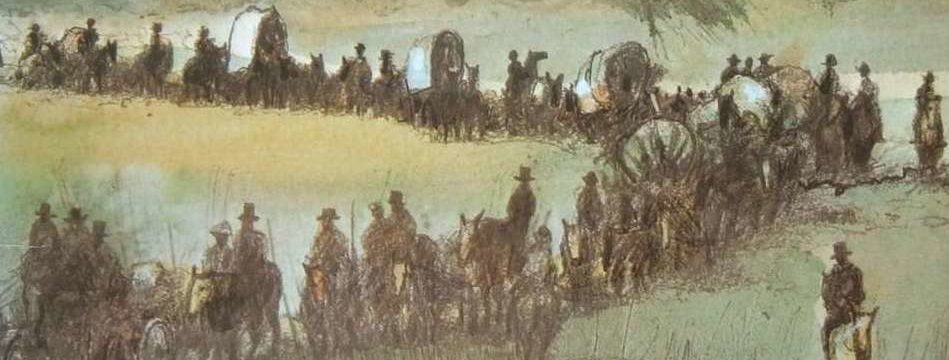In 1951, while humanity vicariously ventured to the heights of the universe, under the wand’rin’ stars it’s terrestrial half constructed the heart and soul of one of the most influential moments in entertainment history which would ultimately define 1969 as a year that produced one of man’s greatest stories of Boom, Bust, Bigamy, & Brotherhood.
When the second half of the twentieth century began, playwright Alan Jay Lerner opened his 6th Broadway Musical based on the waining sense of adventure provided by the previous century and birthed the timeless story, Paint Your Wagon.
 With typicacy of the stage, the original storyline is a wandering exercise that focused on the mystery of the west, it’s people, and uncertainty, while the music, from Frederick Loewe, mimicked the intricate operatic style of the time.
With typicacy of the stage, the original storyline is a wandering exercise that focused on the mystery of the west, it’s people, and uncertainty, while the music, from Frederick Loewe, mimicked the intricate operatic style of the time.
Fortunately, the show must go on.
For the next eighteen years, Lerner would intrench himself in the entertainment industry writing and producing the award winning shows, My Fair Lady and Gigi among many many others. As he began to understand the way of the world and transitioned his writing from New York’s Broadway to California’s Hollywood, it was only natural to adapt his already successful works and in the late 1960, production began in Oregon.
With help from composer André Previn and writer Aaron Chayefsky, Lerner’s story of the chaotic west was transformed into a story of colossal characters in search of community and meaning in the wilderness of the Californias. (As noted in the brief PaisleyTunes post “Paint Your Wagon: Greatest Musical of All Time” from December 30th, 2012)
Musically, the themes of Lerner and Frederick Loewe’s original score were closely followed, yet allowed for reasonable additions and deletions. The style and tempo experienced phenomenal orchestrate remastering with the inclusion of Preven’s modernized opera. Tony Bavaar’s I Talk To The Trees enjoyed a renewed voice with Eastwood, while Bavaar along with Olga San Juan and all of her numbers, were left out of the new production in exchange for one Jean Seberg tune, A Million Miles Behind The Door. The adaptation of James Barton’s voice by a method-acting perpetually less-than-sober Lee Marvin substantiated the exaggerated characters in a fleeting attempt to sell an exhausted audience on one more zany musical. Coupled with production, I’d consider the score a success. No matter the listener, clean studio recording and eighteen years of advancements in technology will always provide a superior sound.
As Preven modernized the opera, Chayefsky modernized the plot to bring the film into a contemporary light. With his popular ‘slice of life’ genericizing style, he created the entertaining ambiguity of Pardner’s name and facilitated changes that narrowed the focus onto Ben, Pardner, and Elizabeth while strengthening the screen presence of the minor characters to create a real world venue in the mountains. He was also responsible for creating No Name City, formerly Rumson City and certainly didn’t shy from Lerner’s notion that the film would be an outrageous production event featuring wacky sub and parallel plots. Viewers of every kind are engaged and goaded into rooting for characters of all morals means throughout the film. Ultimately the plan cost twice the initial budget, at twenty-million dollars, and involved the complete construction and destruction, by livestock, of their full scale 60-miles remote mountain boom-town.
Where am I goin’ I don’t know,
When will I get there, I ain’t certain.
All that I know is I am on my way.
And after all that, their brotherhood stands …but, of course, you know all this already.
